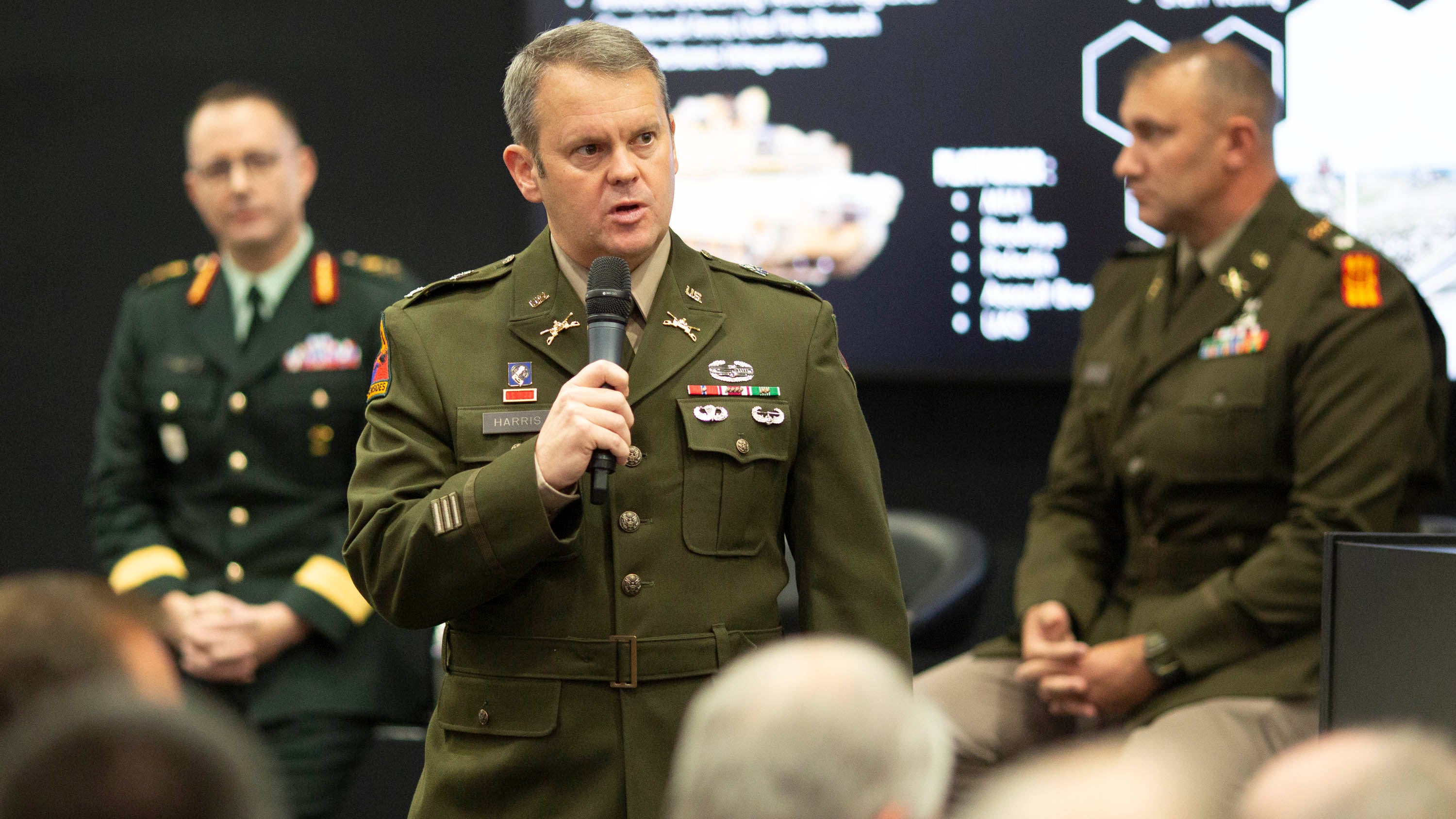Ukrainian Soldiers ‘Hungry’ to Learn, Train
Ukrainian Soldiers ‘Hungry’ to Learn, Train

With less than three weeks’ notice, soldiers from the 1st Infantry Division’s 2nd Armored Brigade Combat Team began an eight-month mission to train Ukrainian soldiers on how to operate the Bradley Fighting Vehicle.
From tasks as simple driving and operating the vehicle all the way to live-fire maneuver training, the American soldiers trained about 9,000 Ukrainian soldiers during their deployment to Europe, said Col. Bryan Harris, the brigade commander.
Speaking Oct. 10 during a Warriors Corner presentation at the Association of the U.S. Army’s 2023 Annual Meeting and Exposition, Harris said he and his soldiers learned a lot as they put the Ukrainians through their repetitions.
“Some of them had never seen a Bradley before in their life,” Harris said. “But they were hungry. They were in those simulators day and night learning how to operate the Bushmasters on those Bradleys.”
When they advanced to the ranges in Grafenwoehr, Germany, the Ukrainian crews ran through basic gunnery tables just as a U.S. tank crew would, Harris said.
“It was truly a highlight of my career to see that,” he said.
The Warriors Corner presentation on international efforts to train Ukraine’s military, also featured Lt. Col. Seth Barrett, commander of the 3rd Battalion, 6th Air Defense Artillery Regiment, at Fort Sill, Oklahoma.
Barrett and his soldiers earlier this year trained more than 70 Ukrainian soldiers on Patriot battery operations. The Ukrainian soldiers were not like the traditional Advanced Individual Training students the battalion typically trains, Barrett said.
“They were highly experienced, their pre-existing air defense artillery skills and their fundamentals were way higher than what we get at the schoolhouse,” he said.
As the training got underway, Barrett and his soldiers adjusted their training plan based on what the Ukrainians needed, he said.
The opportunity to train the Ukrainians was a highlight of his career, Barrett said. “As we sent them back to their units, it was not lost on me the monumental task ahead of them,” he said.
Success on the battlefield depends on the quality of training, Canadian Brig. Gen. Mason Stalker, deputy commanding general for training for the Security Assistance Group-Ukraine, said during the Warriors Corner presentation.
Those words were uttered by a senior Ukrainian army leader, Stalker said, and the coalition is “indeed delivering.”
Established in November by DoD, the Security Assistance Group-Ukraine coordinates the training and equipping of Ukraine’s forces.
“A piece of equipment without a competent operator will not give Ukraine the advantage to fight and win,” Stalker said. So far, almost 90,000 Ukrainian soldiers have been trained by the coalition, with more than 7,200 in training now, Stalker said.
There also is a big focus on leadership training, particularly for NCOs and instructors, Stalker said.
The American soldiers learned a lot from their Ukrainian partners, Barrett said.
“Probably the biggest thing we took away is we got some very intelligent, very experienced, very knowledgeable NCOs,” he said about the Ukrainians. “The question we ask is, how do we get our NCOs and our leaders to be able to take any system that might be in the building [on display at the AUSA annual meeting], and in 10 weeks, in a foreign language, go out and just start laying cruise missiles. … It was a lot of lessons we learned from them.”
— Michelle Tan

